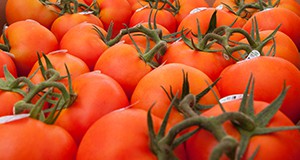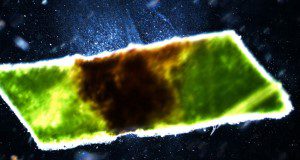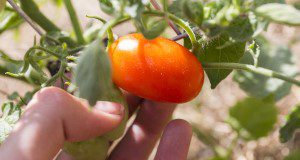Tobamoviruses are mechanically transmitted plant viruses that cause severe economic damage to vegetable and ornamental crops in Florida and worldwide. While certain tomato cultivars have genetic resistance to the most common tobamoviruses, no commercial tomato cultivars are resistant to tomato brown rugose fruit virus (ToBRFV), a recently described tobamovirus that also infects pepper and eggplant. It is currently unknown how ToBRFV may affect tomato production in Florida. This new 5-page publication of the UF/IFAS Plant Pathology Department describes symptoms of the virus, how it is different from other tobamoviruses, and how it is transmitted, as well as what to do if you think you have ToBRFV in your field. Written by Ozgur Batuman, Salih Yilmaz, Pamela Roberts, Eugene McAvoy, Samuel Hutton, Kishore Dey, and Scott Adkins.
https://edis.ifas.ufl.edu/pp360
Tag: Tomato Disease Management
Integrated Management of Bacterial Spot on Tomato in Florida
Bacterial spot is one of the most detrimental diseases of tomato and is especially severe in the southeast United States when weather conditions (high temperature, high humidity, and rain) become conducive for disease development. This new 8-page publication of the UF/IFAS Plant Pathology Department presents updated information about the causal pathogen and management of bacterial spot on tomato in Florida. Written by Amanda Strayer-Scherer, Ying-Yu Liao, Peter Abrahamian, Sujan Timilsina, Mathews Paret, Tim Momol, Jeff Jones, and Gary Vallad.
https://edis.ifas.ufl.edu/pp353
Target Spot of Tomato in Florida
Fresh-market tomatoes bring in $400-$500 million annually as the third most valuable crop in the state. Defoliation and fruit damage from target spot, caused by Corynespora cassiicola, can have serious economic implications for growers. This new 5-page publication of the UF/IFAS Plant Pathology Department, written by Keevan MacKenzie, Jessica Chitwood, Gary Vallad, and Sam Hutton, reviews symptoms and epidemiology of the disease and provides current management recommendations.
https://edis.ifas.ufl.edu/pp351
Tomato Chlorotic Spot Virus
 Tomato chlorotic spot virus (TCSV) is a tospovirus, similar to but distinct from other tospoviruses currently present in Florida. Like these viruses, TCSV is transmitted by thrips and is able to replicate in both the vector and the plant. TCSV was first reported in Florida in 2012 in tomato plants in Miami-Dade and Lee Counties, but it may have been in the state for several years. Prior to 2012, TCSV was only known to occur in Brazil and Argentina. It is not known how this virus was introduced into Florida. This 5-page fact sheet was written by Jane E. Polston, Erin Wood, Aaron J. Palmateer, and Shouan Zhang, and published by the UF Department of Plant Pathology, May 2013.
Tomato chlorotic spot virus (TCSV) is a tospovirus, similar to but distinct from other tospoviruses currently present in Florida. Like these viruses, TCSV is transmitted by thrips and is able to replicate in both the vector and the plant. TCSV was first reported in Florida in 2012 in tomato plants in Miami-Dade and Lee Counties, but it may have been in the state for several years. Prior to 2012, TCSV was only known to occur in Brazil and Argentina. It is not known how this virus was introduced into Florida. This 5-page fact sheet was written by Jane E. Polston, Erin Wood, Aaron J. Palmateer, and Shouan Zhang, and published by the UF Department of Plant Pathology, May 2013.
http://edis.ifas.ufl.edu/pp306
Disease Control for Florida Tomatoes (PPP35/VH056)
 Successful disease management has always been vital in Florida tomato production, given the generally ideal environmental conditions for most plant diseases. An integrated disease management program is a successful approach. This 7-page fact sheet was written by Mathews Paret, Ken Pernezny, and Pam Roberts, and published by the UF Department of Plant Pathology, August 2013.
Successful disease management has always been vital in Florida tomato production, given the generally ideal environmental conditions for most plant diseases. An integrated disease management program is a successful approach. This 7-page fact sheet was written by Mathews Paret, Ken Pernezny, and Pam Roberts, and published by the UF Department of Plant Pathology, August 2013.
http://edis.ifas.ufl.edu/vh056
A Postharvest Fruit Rot Caused by Alternaria sp. on Imported Plum Tomatoes in South Florida (PP303)
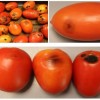 Florida’s deep-water ports are ideal for importing many fruits and vegetables, including tomatoes, by ship from the Caribbean as well as Central and South American production areas. These imports are often strictly regulated for pests, but some pathogens still escape quarantine. This 3-page fact sheet describes a postharvest problem on plum tomatoes that were imported from Mexico through South Florida in 2010. Alternaria sp. was isolated from lesions on diseased fruits, pathogenicity tests were conducted on healthy fruits, and symptoms identical to the originally submitted samples were developed. Written by Zelalem Mersha, Shouan Zhang,and Jerry A. Bartz, and published by the UF Department of Plant Pathology, January 2013.
Florida’s deep-water ports are ideal for importing many fruits and vegetables, including tomatoes, by ship from the Caribbean as well as Central and South American production areas. These imports are often strictly regulated for pests, but some pathogens still escape quarantine. This 3-page fact sheet describes a postharvest problem on plum tomatoes that were imported from Mexico through South Florida in 2010. Alternaria sp. was isolated from lesions on diseased fruits, pathogenicity tests were conducted on healthy fruits, and symptoms identical to the originally submitted samples were developed. Written by Zelalem Mersha, Shouan Zhang,and Jerry A. Bartz, and published by the UF Department of Plant Pathology, January 2013.
http://edis.ifas.ufl.edu/pp303
Late Blight of Potato and Tomato (PP301)
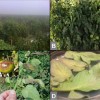 Both potato and tomato are susceptible to late blight, an aggressive disease capable of rapidly destroying entire fields. The disease is distributed worldwide and occurs wherever tomatoes or potatoes are grown and conditions favor disease development. This 4-page fact sheet was written by Ryan Donahoo and Pamela Roberts, and published by the UF Department of Plant Pathology, December 2012.
Both potato and tomato are susceptible to late blight, an aggressive disease capable of rapidly destroying entire fields. The disease is distributed worldwide and occurs wherever tomatoes or potatoes are grown and conditions favor disease development. This 4-page fact sheet was written by Ryan Donahoo and Pamela Roberts, and published by the UF Department of Plant Pathology, December 2012.
http://edis.ifas.ufl.edu/pp301
Groundnut Ringspot Virus in Florida (PP282)
 Groundnut ringspot virus was recently identified in tomatoes in South Florida — the first report in the United States. It can infect tomato plants at all stages of growth and lead to unmarketable fruits or plant death. This 4-page fact sheet shares what is known about the symptoms, host range, disease transmission, and management. Written by Eugene McAvoy, Scott Adkins, Craig Webster, Charles Mellinger, Loren Horsman, Galen Frantz, Stuart Reitz, and Shouan Zhang, and published by the UF Department of Plant Pathology, July 2011.
Groundnut ringspot virus was recently identified in tomatoes in South Florida — the first report in the United States. It can infect tomato plants at all stages of growth and lead to unmarketable fruits or plant death. This 4-page fact sheet shares what is known about the symptoms, host range, disease transmission, and management. Written by Eugene McAvoy, Scott Adkins, Craig Webster, Charles Mellinger, Loren Horsman, Galen Frantz, Stuart Reitz, and Shouan Zhang, and published by the UF Department of Plant Pathology, July 2011.
http://edis.ifas.ufl.edu/pp282
PP200/PP121: A Series on Diseases in the Florida Vegetable Garden: TOMATO
Revised! PP200, an 8-page illustrated fact sheet by Gary Vallad, Ken Pernezny, and Tim Momol, describes several diseases most likely to appear on garden tomatoes in Florida, providing information for identification and management for each. Published by the UF Department of Plant Pathology, February 2009.
http://edis.ifas.ufl.edu/pp121
PP259 Tomato Purple Leaf Disorder: A New Challenge for the Tomato Industry in Florida
PP259, a 2-page illustrated fact sheet by Gary E. Vallad, Bielinski M. Santos, Jane E. Polston, David J. Schuster, Andrew W. MacRae, Jeremy D. Edwards, and John W. Scott, describes this disorder, TPLD, observed in tomato fields in Hillsborough, Manatee, and Miami-Dade counties since 2006 — symptoms and field distribution, and the state of current research into the disorder. Published by the UF Department of Plant Pathology, November 2008.
http://edis.ifas.ufl.edu/PP259
